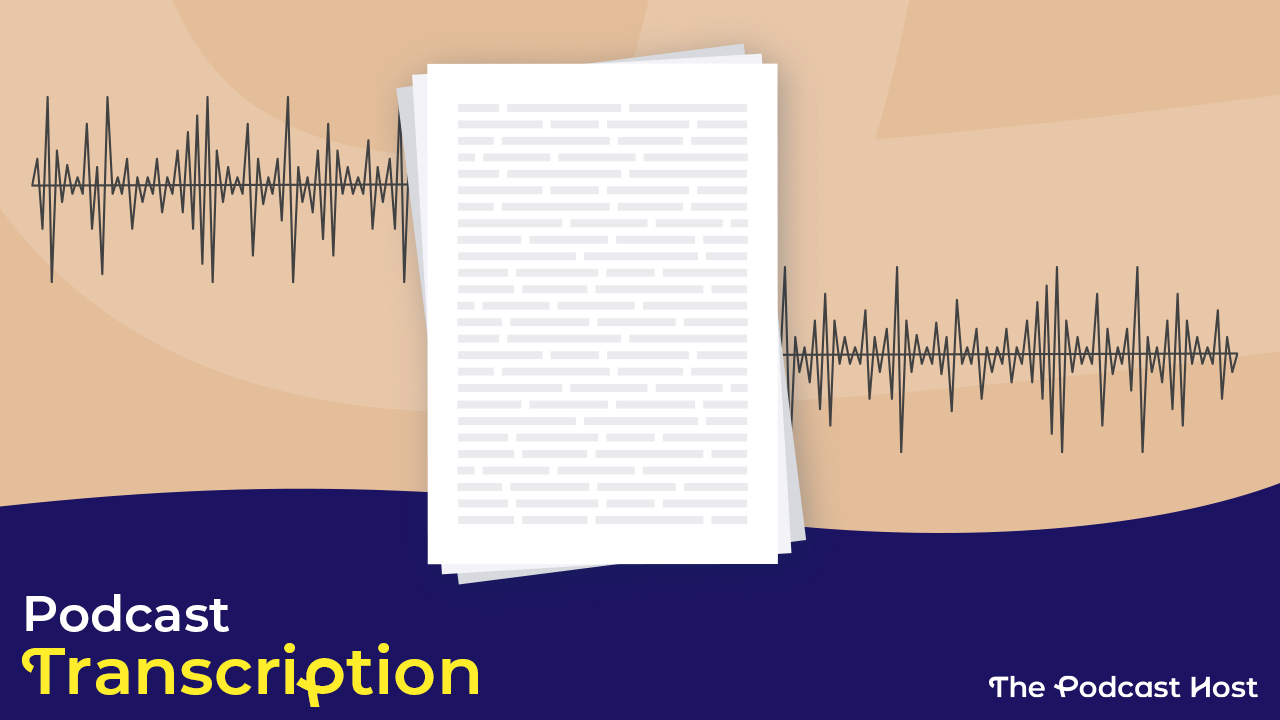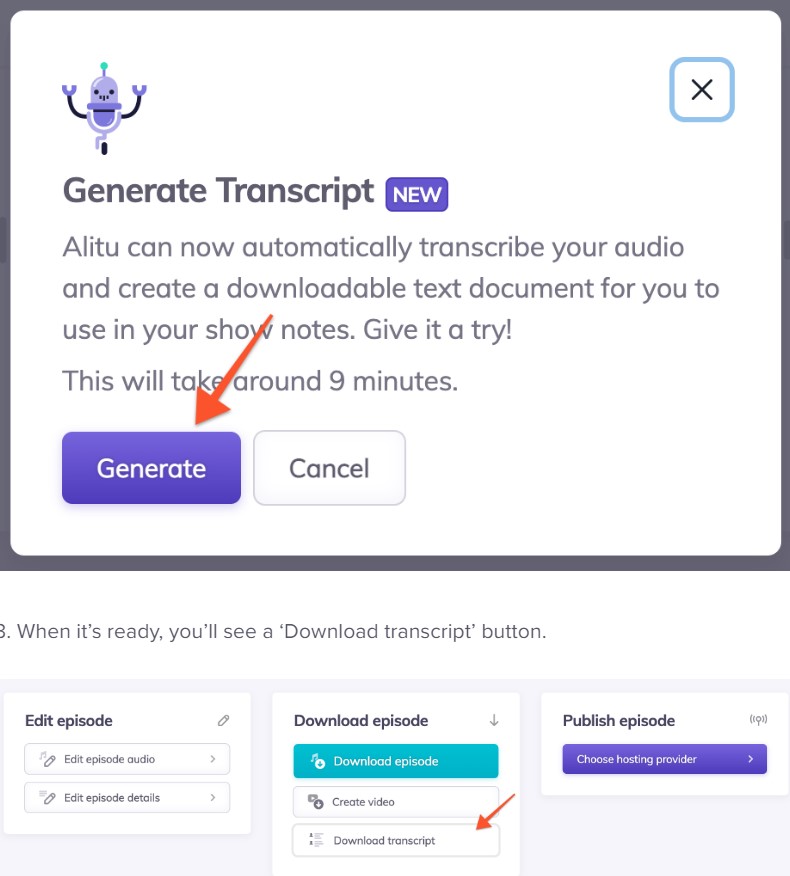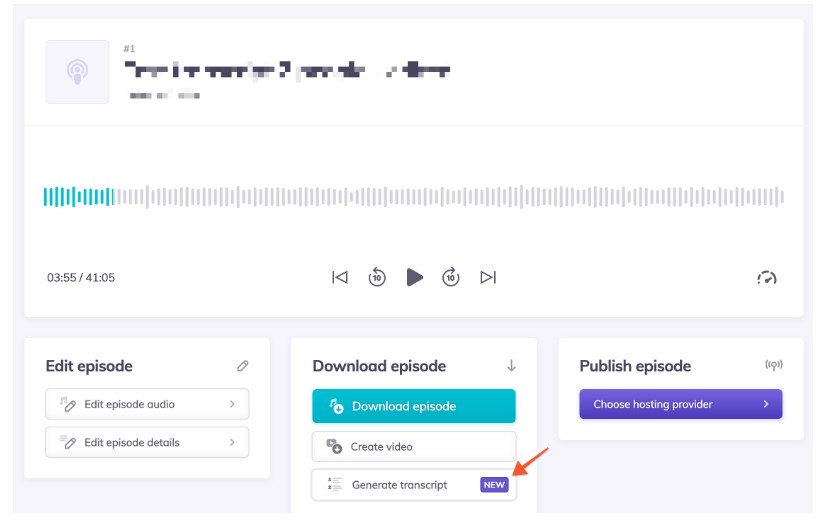How to Create a Podcast Transcript, & Why Transcription Matters

In a nutshell: Transcription is essential to good PR and podcast accessibility. This article covers three means of creating a podcast transcript.
- You can do it yourself, with some simple tools
- You can hire a freelancer
- You can use a tool or service
- This article will also discuss the pros and cons, whys and hows, of a few different transcription services
- We’ll also help you decide how to use your podcast transcript, once it’s created
- Read on for the full lowdown…
We think of podcasting as a purely aural medium, but we ignore podcast transcription at our peril (not to sound like a character from I, Claudius). In all seriousness, if your podcast doesn’t have transcripts, that’s an awful lot of audience you’re missing. Or even, excluding.

“Wait a minute!” you say. “Transcripts are more time and money. How much do you expect me to invest in this podcasting thing? What’s in it for me?”
We’ve already talked about why you should use transcripts. It bears repeating, however:
- 11 million people in the UK and 10 million people in the US are d/Deaf or hard of hearing
- Many folks have auditory processing disorders
- Podcast episode transcripts can boost your search engine optimization
- Transcripts are another avenue for more people to understand and engage with your content

Editor’s Note
Our podcast transcription guide was originally written in 2019. We update this post periodically to reflect changes in technology, our recommendations, and because we’re always learning new things!
In this article, we’re not going to talk about why you want to invest the additional work or money into podcast transcription. We’re going to talk about different methods or companies that you can use to get your podcasts transcribed, and make them available to your audience. Let’s get started.
Want Podcast Transcription, Recording, Editing, & Publishing All in One Tool?
Podcasting is full of nifty tools and apps that can make your life easier. There’s recording software, remote call software, editing software, podcast transcription software, and then there’s your podcast hosting account to upload your finished work.
Some podcasters love working with multiple platforms and systems. Many others get frustrated with the long list of logins though, and long for a “one ring to rule them all”. Does such a ring exist, though?
Actually, yes. It’s called Alitu. And after seeing it in action, you might even start to refer to it as “my precious”.

Alitu began as a solution to the most common podcaster problem of all – editing and production. The aim was to make cleaning up your audio, chopping out mistakes, and building your episodes as simple as humanly possible.
In time, new features were added to Alitu, from call recording to hosting. And now, podcast transcription has been added to the mix. Here’s the lowdown on how to transcribe your podcast episodes with Alitu.
You’ll get access to this feature as standard with your account, giving you up to 10 hours of transcription per month. Why not sign up for a 7-day free trial and test it all out for yourself?
DIY Methods for Podcast Transcription
If your podcast is a scripted audio drama, you can certainly use that script. You can also sit down and type out your podcast’s recording, word for word. If you’re already a professional stenographer, this won’t bother you too much. However, not many people have that skill set or patience.
Google Docs Dictation Software Hack
Another option for podcast transcription (recommended in a livestream by our friends at Music Radio Creative) is to use Google Docs voice typing. Here’s how it works:
- Open up Chrome (you have to use Google’s Chrome browser, otherwise the tool isn’t available)
- Go to Google Docs and open a fresh document
- Click on Tools and select Voice Typing from the drop-down menu. A nifty little icon of a microphone will appear. At the top of the microphone, select your language.
- Open up your DAW and start playing the sound file you want transcribed.
- Click the little microphone icon. It’ll change colors. As the microphone picks up the dialogue, the text will appear on screen.
When you try this, make sure that the audio is cued up at the point where you want it transcribed. if you let it run through a minute of intro music or so, the voice typing tool won’t recognize the music as anything useful, and will shut itself off.
Google’s Voice Typing was pretty good at recognizing what I said when I tried it. To test its accuracy, I selected UK English, US English, and Nigerian English, to see if there would be differences in the resulting text. There wasn’t.
You’ll end up with pages and pages of unpunctuated text. It’s very stream-of-consciousness. You will have to go through it and format it, put in punctuation and check for errors. However, it saves you a lot of time over typing the audio word for word.
There’s a quality control issue here, as well. You may notice as you’re making this podcast transcript, that you notice the dialogue as an outsider. Transcribing the podcast yourself will help you see the details of what you talk about, and how.

Video Captions
Another DIY method is to use your podcast audio to make a video file, upload it to YouTube, and use its closed captioning to provide a transcript. I can’t vouch for the accuracy of YouTube’s closed captioning. Joe Rogan uses this exclusively, and it works for him. Your mileage may vary.
Headliner is a free app which can be used to make audiograms (and it’s fun to use). It’s 100% worth your time to try it out, and see how its captioning system fits your podcast. These can also work great as social media posts, and help encourage your guests to share your episodes.
Think about your SEO for a second. Google’s Product Manager for Google, Brad Ellis, spoke about automatic captioning and SEO at the Streaming Media Conference in 2016. He said that when a YouTube user uploads their own captions, Google does index them. But, because the automatic transcriptions are error-prone, they are not indexed. Granted, this was a few years ago, and the technology may have changed. For now, if your SEO is your most important reason for having transcripts, it’s best not to rely on YouTube’s automatic captioning only.
Many people consume their video podcasts via YouTube. It’s not a bad idea to make them available there with captions. But it shouldn’t be your only way of publishing those transcripts.
Options for Outsourcing Podcast Transcription
If you don’t want to do the transcription yourself, you have a few options. They are:
- Humans (having someone else do it for you)
- Artificial Intelligence (a software does it)
- A combination of both
A heads up that we use the odd affiliate link here when pointing to products and services we think you’ll find useful. We’d earn a small commission should you choose to buy through them, at no extra cost to yourself.
Human Transcription: Best for Accuracy
Manual transcription is the most accurate version of podcast transcription that you can use. Humans can understand context and spoken sound in a way that machines can’t. If your podcast uses the sentence, “Let’s eat Grandma,” a human would know where to put the comma, while a machine might not. It’s also not cheap. Some transcribers charge by how long it takes them to do the work, others by how much audio you supply. In most cases, it’s between $1-$2 per minute of transcribed audio. If you look at a site like Upwork or fiverr.com, you can find a fair number of freelance transcribers.
GoTranscript offers “100% Human-Generated Transcription Services,” and offer a minimum of 6-hour turnaround time. Their prices vary by how soon you need your podcast transcript finished, and how long your audio files are. Expect to spend around 80 cents to $2 per minute.
If you have a loyal fan or close friend who loves your podcast, you may be able to get them to volunteer to transcribe your podcast in a skill swap. Ask them if they would transcribe an episode or two of your podcast in exchange for helping them move house.
Artificial Intelligence: Lower Cost
If you’ve ever asked Siri to send a text message for you, or if you’ve asked Google to look something up, you’ve used something like one of these services.
Audext is a machine learning transcription service. You can drag and drop files of various formats (MP3s, WAVs, M4As, WMAs, etc) into the Audext interface and it’ll quickly transcribe them. There’s a speaker identification feature that’s handy for podcast interviews. You can edit your transcriptions easily within Audext before downloading them. Cost-wise, a one-off hour of transcription is priced at $12, but you can save on their subscription packages. A free trial is available if you’d like to test the water with Audext.
Trint offers monthly or annual subscription packages ($60-$85), with a 7-day free trial. They range by the amount of files you can upload per month, and how many users you can have on the account. However, since a file can be any duration, the starter package would fit most indie podcasters, if you organize your audio files well. Trint also has an iPhone app.
Temi is very similar, with one price tier: 25 cents a minute. Their free trial provides one transcript, of a 45 minute audio file. Their free demo not only shows you how it transcribes a news piece with multiple speakers and accents, but also will let you practice editing the piece to test the interface. This free demo is 100% worth your time to look at, because it can show you good transcript layout.
Descript offers a free trial for the first 3 hours of speech uploaded. After that, the service is $14-18 a month. They say that they can turn around a 60-minute sound file in about three minutes.
Sonix is another quick and inexpensive podcast transcription service. The Standard package is $10 per hour of uploaded audio. The Premium tier is $5 per hour and $22 per user, per month. Sonix provides transcription in multiple languages, even at the Standard level. Their free trial includes 30 minutes of transcription service.
Artificial and Human Intelligence
These services use a combination of AI transcription, with a human checking for accuracy and consistency.
Scribie offers a pay-as-you-go system, either fully automated for ten cents a minute, or eighty cents a minute for automated transcription with a human editor. They add on an extra fifty cents if your audio is poor, noisy (speaker isn’t distinct from the background), or for “accented speakers.” They say that it’s fifty cents a minute for American speakers. This makes me want to send them a sound file in an accent so Philly, it sounds like I live underneath the Market Frankford El. An integrated editor lets you make changes if necessary.
Rev.com might be the most well-known podcast transcription service; it was included on Forbes’ AI 50 list. Its automated transcription costs 25 cents a minute, with a 5-minute turnaround time. Their human transcription service is $1.25 a minute, with a 12-hour turnaround time. They can even create foreign subtitles for video, for $3-$7 per minute. Some podcast hosting services (such as Castos) include transcriptions using Rev.com for an additional fee.
Where Do I Put My Podcast Transcript?
This is the final part of the podcast transcription process. Where does it go?
In the past, a lot of advice was given around copying your transcripts directly into your episode shownotes or blog post. It was said that this would add in more keywords, and so, be good for SEO and searchability.
However, as we don’t talk like we write, a transcript can look and read messy. Google prioritises well-written content, so it’s unlikely a podcast transcript is going to rank well in search. At least, without some additional content to bolster it.
It’s a better idea to clearly make downloadable transcripts available via a link in your shownotes. These could be in PDF, SRT, or any other appropriate file format.
Some podcast hosting providers have features where you can copy in or upload transcripts to, too. Others, like Alitu’s beta hosting, will generate your transcripts for you.
One final idea is that you might offer to deliver transcripts to your listeners by email, after each episode is published. There are loads of benefits to running an email list for your podcast, and we dive into that topic fully in the article linked to, there.
Podcast Transcription Summary: Accessibility for Your Audience
Your podcast transcript can build and sustain your audience. It can make your content more accessible and more meaningful to others.
There are no shortage of options out there when it comes to getting your podcast transcribed. Rev.com and GoTranscript are two great human options, whilst Temi and Trint offer good value on a budget, too.
Of course, you might want to do your recording, editing, production, publishing, and transcription all in one place, and if so, ‘Podcast Maker’ tool Alitu is the place to go. Remember, you can get a 7-day free trial to test it all out for yourself!

Need More Help?
Behind every accessible podcast is a podcaster who cares about their audience. This approach can lead to more reach, impact, and growth.
Providing good podcast transcripts is just one part of the bigger puzzle, though. The Podcast Academy has courses and resources to help you with everything from mic technique to unlocking the secrets of DAWs. Plus, the weekly Live Q&As provide an opportunity for you to get specific assistance on any aspect of podcast creation!
